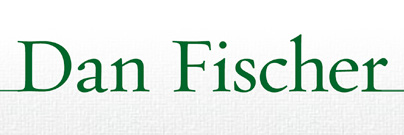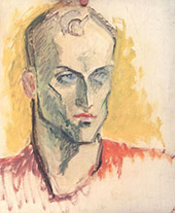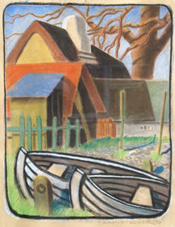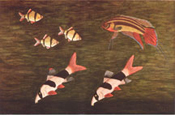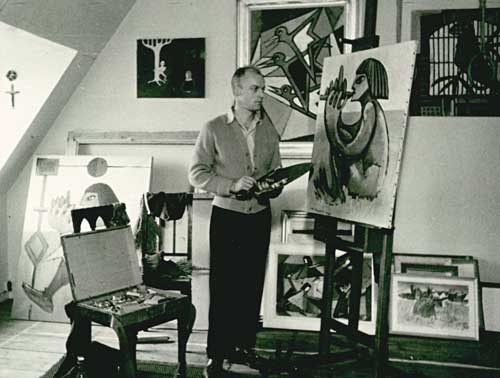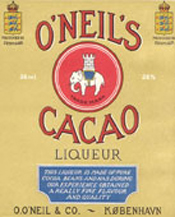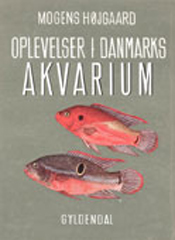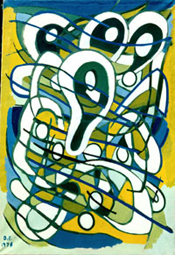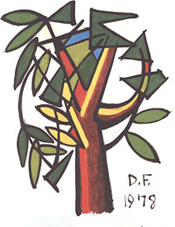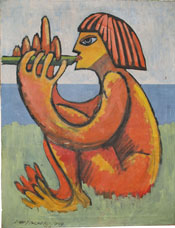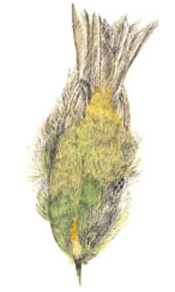Dan Fischer was the oldest son of Aage og Maria Fischer (1). Dan’s natural talent for drawing and painting was appreciated at an early age and encouraged. He became a pupil of Kaj Jensen in Skovshoved at the age of 14. Later he went to the Academy of Arts and Crafts in Bredgade, Copenhagen, where he also received instruction in advertising design and drawing. He had three years of special instruction from Emil Rannow at the Glyptotek. He finished his formal education as a pupil of Rostrup Boyesen at the National Gallery of Denmark where he studied for 18 months. A rare front cover to the culture section of the national Danish paper, Berlingske Tidendende, in 1939 shows his early style. The following years were difficult. The sudden death of his younger brother, Olfert, in 1939, was a traumatic experience which affected Dan for the rest of his life. In 1940 Denmark was occupied by the Germans and around 1942 Dan and his family became members of the resistance movement, Holger Danske. Dan and his father escaped to Lund in Sweden in 1944, but his brother Jean (2) and sister Else (3) were captured by the Nazis. In addition to these difficulties an untreated injury to Dan’s knee when he was a teenager worsened and became very painful. He was prescribed morphine as a painkiller and became addicted. In order to overcome his morphine dependency he voluntarily spent some months in a lunatic asylum (as it was then called) in the South of Zealand in 1946-47. Though cured of drug dependency, alcoholism later became a problem and a handicap. During the period 1947-50 he made designs for a clothing manufacture as well as drawings for the newpapers Berlingske Tidende and Landet. He also produced designs and drawings for labels and book covers. |
|
|
Dan Fischer in his studio in Bredgade, Copenhagen, c. 1952. |
|
In the beginning of the 1950s Dan painted in Spain (Tenerife) and Ireland. This period reveals the development of his characteristic style. He had two very successful exhibitions in Erling Haghfelt’s gallery in 1952 and 1954 which received very good reviews (see > review, in Danish). In 1952 he married Margrethe Berner (1921-2005, nee Borge) and they lived in Hellerup. He moved his studio to Jomsborgsvej 39, to a basement with windows, three feet from the beach, with views over Øresund, the strait between Zealand and Sweden. This became his studio for the rest of his life. Here he received many visits from friends and family. (Dan was entertaining and charming company.) The studio was close to Hellerup Yacht Club of which he was lifelong member, and where he spent much of his time. Dan and Margrethe had three children: Clemens (1953-2004), Thomas (1956-) and Jean (1962-). In the 1950s and early 1960s the family lived for long periods on the Costa del Sol, near Malaga, where Dan did some of his best watercolours. It also provided the inspiration for several short stories about life in Spain. The family also travelled to Øland and Norway, but only a few pictures survive from these shorter journeys. The end of the 1960s and beginning of the 1970s was a difficult decade with both personal and artistic isolation. Travels to Switzerland, Finland and France did not provide inspiration. His journey to South Africa in 1967 was an exception and he sold most of his pictures (See interview in the > Rand Daily.) However, generally he was unable to follow up on his previous success and even though he was generously supported by his parents (and later by Frihedsfonden – a charity for the Danish resistance movement and their families) financial hardship followed. He was separated from Margrethe in 1970 and divorced a few years later. He produced very few pictures in these years. Between 1977 and 1978, in the course of one year, he had his life’s most productive period. He painted many large oil paintings in his now unique style. Some of these paintings were inspired by a journey with the Trans-Siberian Railway in the old USSR in 1978. This explosion of creativity evaporated as quickly as it had appeared. He created his last painting in 1981 and his final exhibition was in 1984. His health deteroriated rapidly and he became too weak to paint. At the time of his death in 1987 his estate contained around 90 oil paintings and 200 watercolours, some 50 sketchbooks, and 40 notebooks. The latter include diary notes and shortstories. Dan Fischer. Born 23. januar 1919, Charlottenlund. Died 17. november 1987, Gentofte. |
|
Dan in the > Dictionary of Arts, 11th edition, 1971-72 (Berlin). 1) Aage Fischer established his own decorating company i Viggo Rothesvej, Charlottenlund. 2) Captured by the nazis Jean Fischer became a prisoner in the concentration camp Neuengamme. After the war he became an architect and innovator. He financed and built the world’s first plusenergy house in 1975. 3) Else Fischer (1923-1976) was kept in jail by the German occupying force for the remainder of the war. She wrote about her experiences in her famous debut novel, Roser i November (Roses in November, 1946). She was a journalist and author of popular crime novels. |
